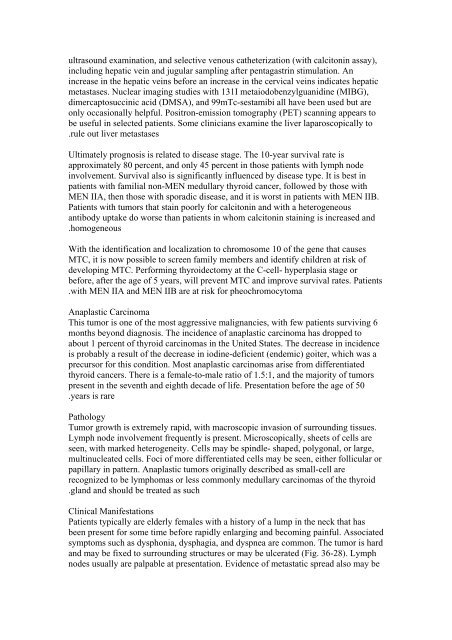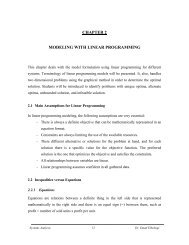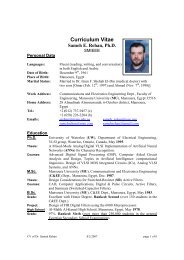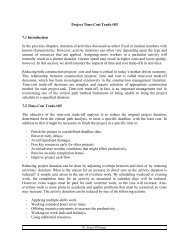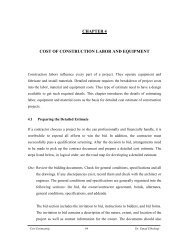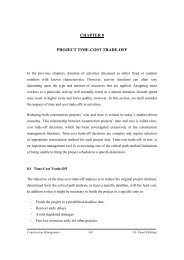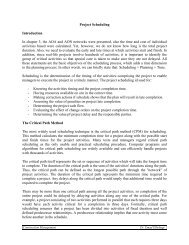Thyroid and Parathyroid
Thyroid and Parathyroid
Thyroid and Parathyroid
Create successful ePaper yourself
Turn your PDF publications into a flip-book with our unique Google optimized e-Paper software.
ultrasound examination, <strong>and</strong> selective venous catheterization (with calcitonin assay),<br />
including hepatic vein <strong>and</strong> jugular sampling after pentagastrin stimulation. An<br />
increase in the hepatic veins before an increase in the cervical veins indicates hepatic<br />
metastases. Nuclear imaging studies with 131I metaiodobenzylguanidine (MIBG),<br />
dimercaptosuccinic acid (DMSA), <strong>and</strong> 99mTc-sestamibi all have been used but are<br />
only occasionally helpful. Positron-emission tomography (PET) scanning appears to<br />
be useful in selected patients. Some clinicians examine the liver laparoscopically to<br />
. rule out liver metastases<br />
Ultimately prognosis is related to disease stage. The 10-year survival rate is<br />
approximately 80 percent, <strong>and</strong> only 45 percent in those patients with lymph node<br />
involvement. Survival also is significantly influenced by disease type. It is best in<br />
patients with familial non-MEN medullary thyroid cancer, followed by those with<br />
MEN IIA, then those with sporadic disease, <strong>and</strong> it is worst in patients with MEN IIB.<br />
Patients with tumors that stain poorly for calcitonin <strong>and</strong> with a heterogeneous<br />
antibody uptake do worse than patients in whom calcitonin staining is increased <strong>and</strong><br />
. homogeneous<br />
With the identification <strong>and</strong> localization to chromosome 10 of the gene that causes<br />
MTC, it is now possible to screen family members <strong>and</strong> identify children at risk of<br />
developing MTC. Performing thyroidectomy at the C-cell- hyperplasia stage or<br />
before, after the age of 5 years, will prevent MTC <strong>and</strong> improve survival rates. Patients<br />
. with MEN IIA <strong>and</strong> MEN IIB are at risk for pheochromocytoma<br />
Anaplastic Carcinoma<br />
This tumor is one of the most aggressive malignancies, with few patients surviving 6<br />
months beyond diagnosis. The incidence of anaplastic carcinoma has dropped to<br />
about 1 percent of thyroid carcinomas in the United States. The decrease in incidence<br />
is probably a result of the decrease in iodine-deficient (endemic) goiter, which was a<br />
precursor for this condition. Most anaplastic carcinomas arise from differentiated<br />
thyroid cancers. There is a female-to-male ratio of 1.5:1, <strong>and</strong> the majority of tumors<br />
present in the seventh <strong>and</strong> eighth decade of life. Presentation before the age of 50<br />
. years is rare<br />
Pathology<br />
Tumor growth is extremely rapid, with macroscopic invasion of surrounding tissues.<br />
Lymph node involvement frequently is present. Microscopically, sheets of cells are<br />
seen, with marked heterogeneity. Cells may be spindle- shaped, polygonal, or large,<br />
multinucleated cells. Foci of more differentiated cells may be seen, either follicular or<br />
papillary in pattern. Anaplastic tumors originally described as small-cell are<br />
recognized to be lymphomas or less commonly medullary carcinomas of the thyroid<br />
. gl<strong>and</strong> <strong>and</strong> should be treated as such<br />
Clinical Manifestations<br />
Patients typically are elderly females with a history of a lump in the neck that has<br />
been present for some time before rapidly enlarging <strong>and</strong> becoming painful. Associated<br />
symptoms such as dysphonia, dysphagia, <strong>and</strong> dyspnea are common. The tumor is hard<br />
<strong>and</strong> may be fixed to surrounding structures or may be ulcerated (Fig. 36-28). Lymph<br />
nodes usually are palpable at presentation. Evidence of metastatic spread also may be


